![]()
|
James
Edwards |
Location and period of operation:
|
James
Edwards |
Burslem |
1842 |
1851 |
|
Earthenware and Ironstone manufacturer at the Dale Hall Pottery, Dale Hall, Burslem, Stoke-on-Trent, England
|
Subsequently: James Edwards & Son
|
Dale Hall Pottery The extensive works of Messrs. James Edwards and Son are the oldest existing works in Dale Hall. They belonged to Messrs. John and George Rogers (brothers) till 1815, when the latter died, and Mr. Spencer Rogers having joined his father, the business was carried on under the style of John Rogers and Son. In 1816 Mr. John Rogers died, leaving £1,000 to the North Staffordshire Infirmary, and other charitable bequests. He had erected a handsome residence, "The Watlands" near Wolstanton. The firm continued as John Rogers and Son until 1842, when the manufactory was purchased by the late Mr. James Edwards, formerly of the firm of James and Thomas Edwards of the Kiln-Croft Works. Messrs. Rogers produced tableware of a higher and better quality than most of their contemporaries, and were especially famed for their light blue "Broseley" or "Willow" pattern services. The mark used by them appears to have been simply the name ROGERS impressed in or printed on the ware; sometimes with the addition of the sign of Mars or Iron. Commencing simply as a thrower at Messrs. Rogers, he became a manager at Philips's of Longport, and at John Alcock's of Cobridge, then commenced business in partnership with John Maddock, and afterwards, in partnership with his brother Thomas Edwards, carried on business in Sylvester Square, Burslem, and next in partnership with Mr. John Maddock, in the same town. In
1842 he purchased the manufactory of Messrs. Rogers and Son, where he commenced entirely on his own account. By him the manufactory was considerably enlarged and extended; a flint-mill erected ; new machinery of the most approved construction (including steam jiggers, lathes, jollies, throwing- wheels, and Needham and To Mr. Edwards the white graniteware, which has now become so important a feature in the Pottery district, mainly owes its excellence; that made by him being considered to be all that could be desired by our transatlantic brethren, and to be the standard of perfection to which the aims of other houses were directed. In 1851 a medal was awarded to Mr. Edwards, and an additional certificate of merit, for beauty of form and excellence of goods exhibited. At the New York Exhibition they also received honourable mention, and in 1865 a prize medal was awarded for electrical, chemical, galvanic, and photographic apparatus in both ironstone and earthenware. Mr. Edwards, who had taken his son Mr. Richard Edwards into
partnership, retired from the concern in 1861, and died, full of honours, as a magistrate and otherwise, in January, 1867, one of his last acts of thoughtful benevolence being that of (only a few days before his death) sending to a number of his old workpeople at the manufactory cheques varying in amount from
£20 to £100 each, according to each one's length of service. The works are now carried on by Mr. Richard Edwards under the style of "James Edwards and Son."
The Ceramic Art of Great Britain. Llewellynn Jewitt, 1878 |

To prevent this shape from
being copied it was entered
at the registry office of
designs May 30th 1842 by
James Edwards
the
design registration applied for was granted
on the 30th December 1842 - it was for a
vegetable dish and tureen
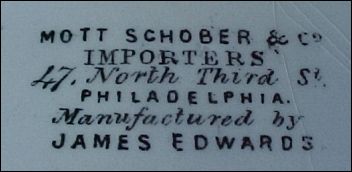 Mott Schober & Co Importers 47, North Third St. Philadelphia Manufactured by James Edwards Edward T. Mott and Samuel Schober were partners in Philadelphia for 13 years. They imported china, glass and Queensware (white ironstone) After the partnership was dissolved in 1851 Mott continued to operate the store, which moved up 3rd street every 3 or so years, first at 47, then at 72, and finally at 120 No. 3rd. Mott died in 1858. |
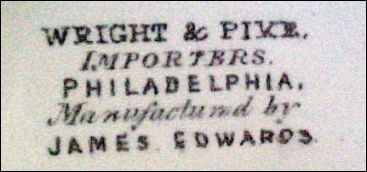 Wright & Pike Importers Philadelphia Manufactured by James Edwards Robert K. Wright and Thornton Pike were the principles in the partnership, which had a store at 29 North 3rd Street, Philadelphia between 1847 and 1850, and at 205 High Street between 1851 and 1856 |
source: Queensware Direct from the Potteries
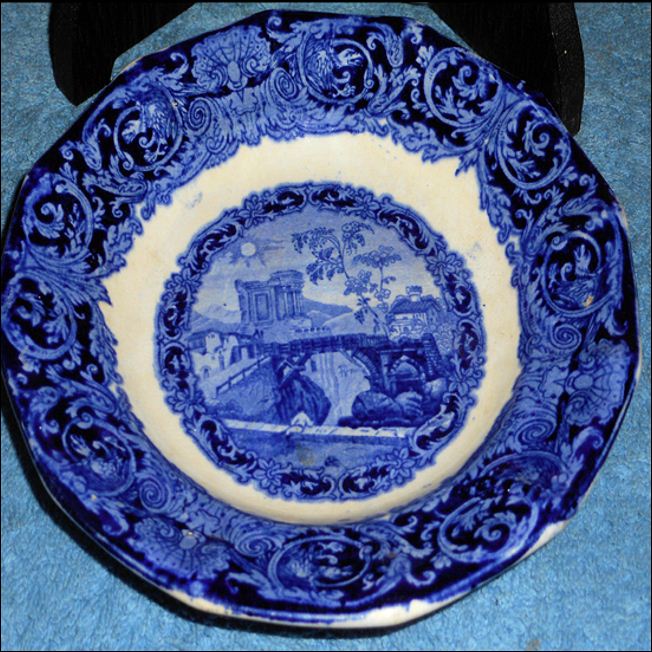 Shallow dish in the Saxon Blue Design |
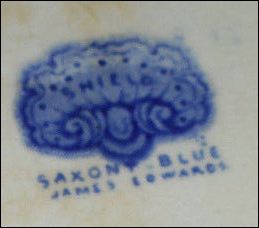 Saxon Blue James Edwards Saxon Blue was originally produced by Dillwyn & Co (Swansea Pottery) |
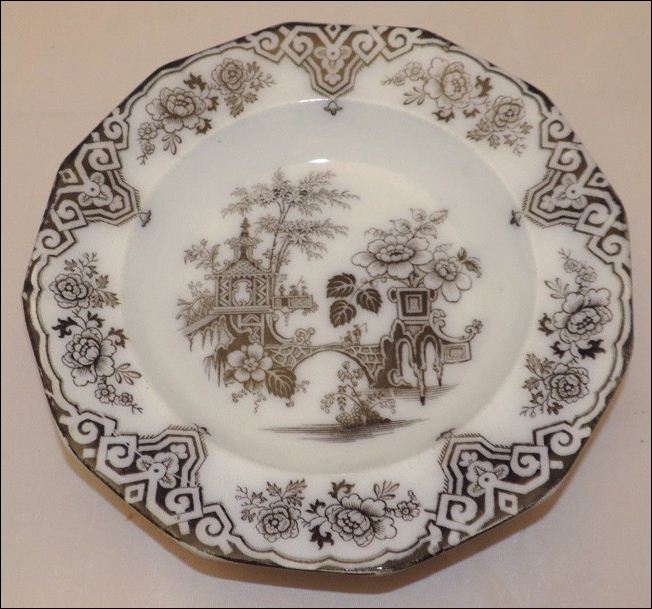 Shallow dish in the Bochara pattern transferware with a pattern in the 'Oriental' style |
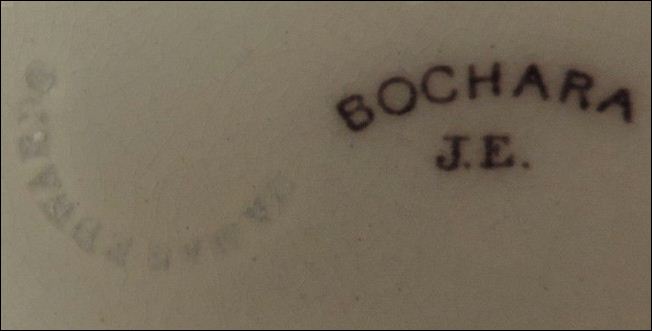
J E
James Edwards (impressed)
BOCHARA is the pattern name
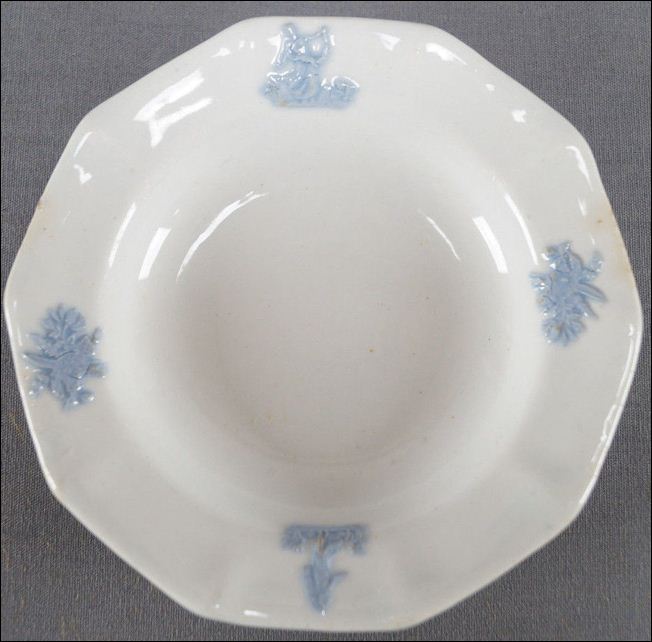 bowl with applied decoration Porcelaine à la Perle
|
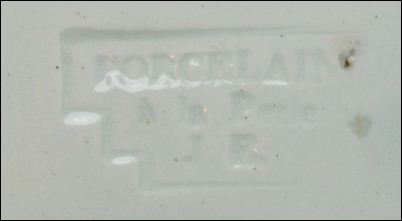 Porcelaine à la Perle J E
|
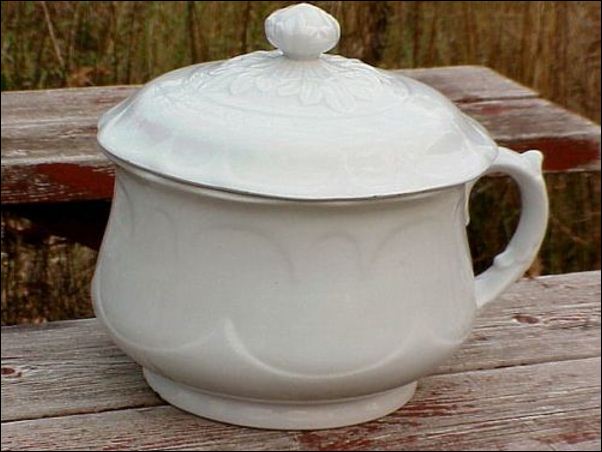
covered chamber pot in white
ironstone
James Edwards specialised in producing white ironstone ware
which was mainly for
export to America
Registered design information for the Curved Gothic shape
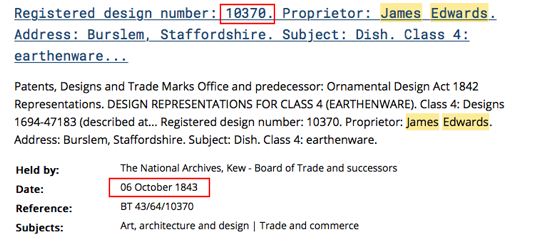
The National Archives
registered design 10370
6 October 1843
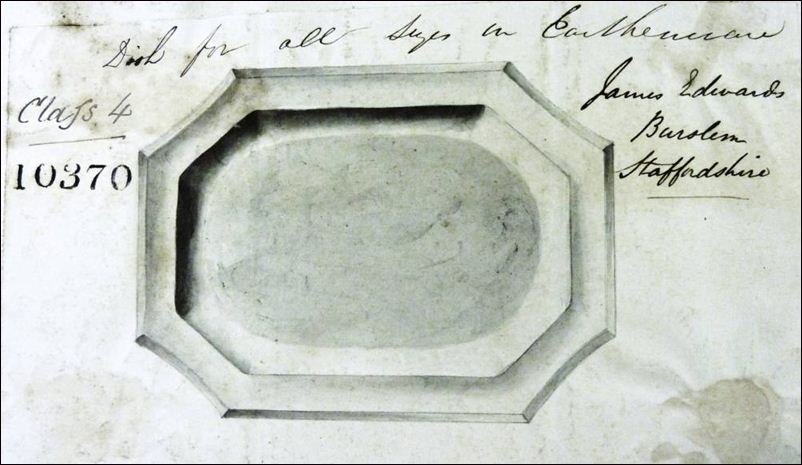
Dish for all sizes in
Earthenware
James Edwards Burslem Staffordshire
Class 4 10370
copy of the registration entry held at the National
courtesy: james-edwards.info
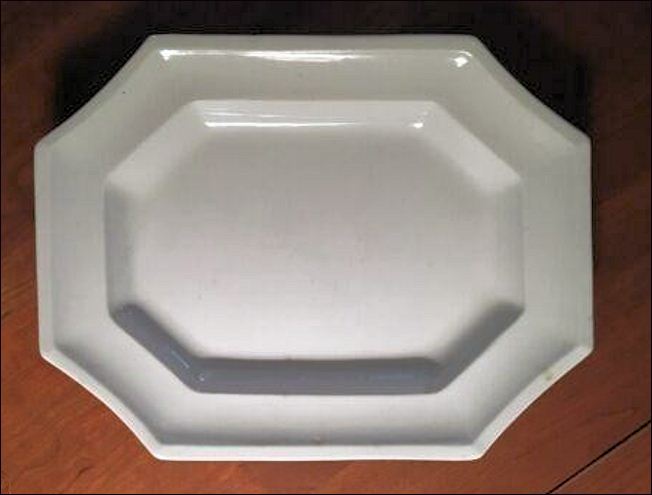
large white ironstone platter
in the Curved Gothic shape
introduced in October 1843 this
was a popular shape produced by James Edwards
mostly in plain white ironstone but occasionally with a transfer pattern
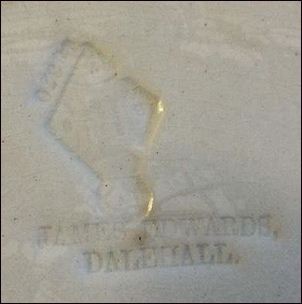 James Edwards Dalehall impressed name and place with the registration diamond and number 10370 |
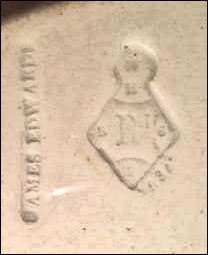 James Edwards impressed name with the registration diamond and number 10370 |
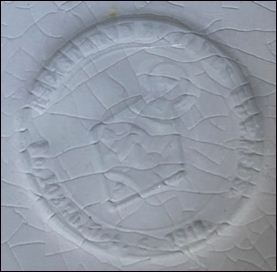 although difficult to read the circular inscription reads.... Registered By James Edwards |
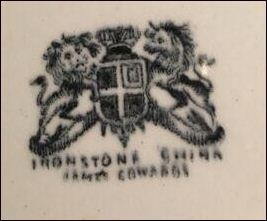 Ironstone China James Edwards impressed marks on platters sometimes accompanied by this printed mark |
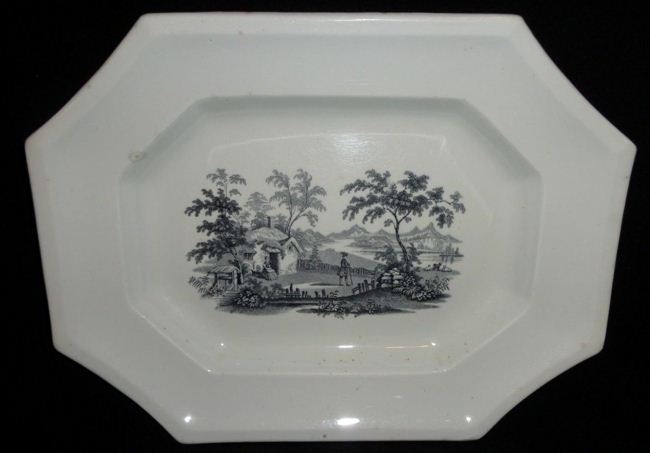 small dish in the Curved Gothic shape with a transfer pastoral pattern |
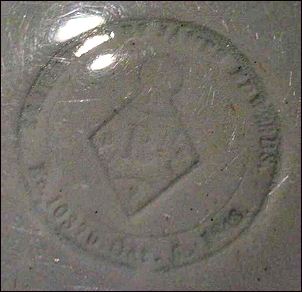 Registered By James Edwards No. 10370 Oct. 6 1843 impressed circular
mark |
Marks & initials used on ware for identification:
J E
James Edwards
Jas Edwards
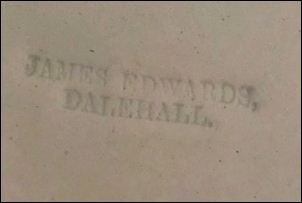
James Edwards
Dalehall
(impressed)
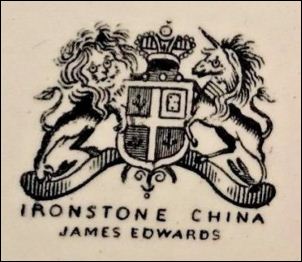
Ironstone China
James Edwards
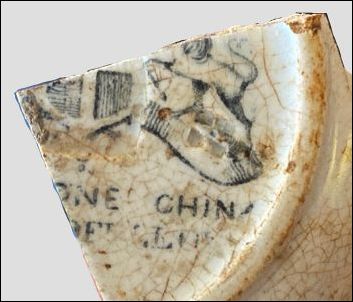
shard discovered at the site of
a settlement
in rural New York
Probably manufactured by James Edwards
photo courtesy: Abby Cataldo
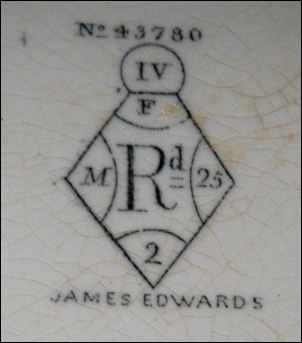
James Edwards
the diamond registration mark
gives a registered date of 25 June 1847
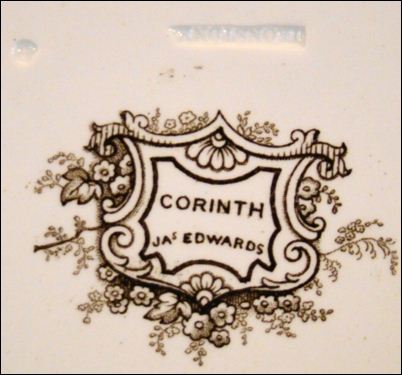
Jas Edwards
impressed: IRONSTONE
CORINTH is the pattern name
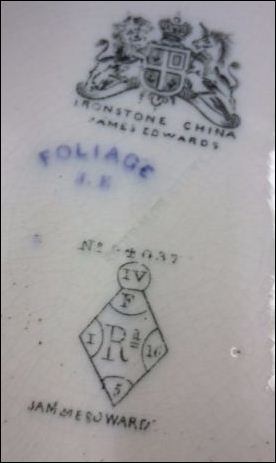
James Edwards
JE
the diamond registration mark
gives a registered date of 16 July 1847
FOLIAGE is the pattern name
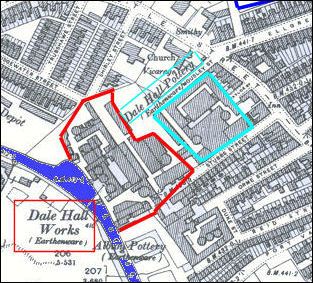
The Dale Hall Pottery is
shown in blue
- click map for more -
Questions, comments, contributions: email: Steve Birks